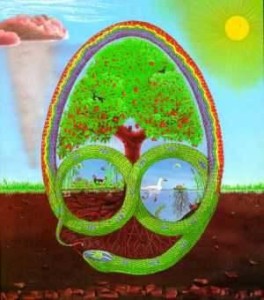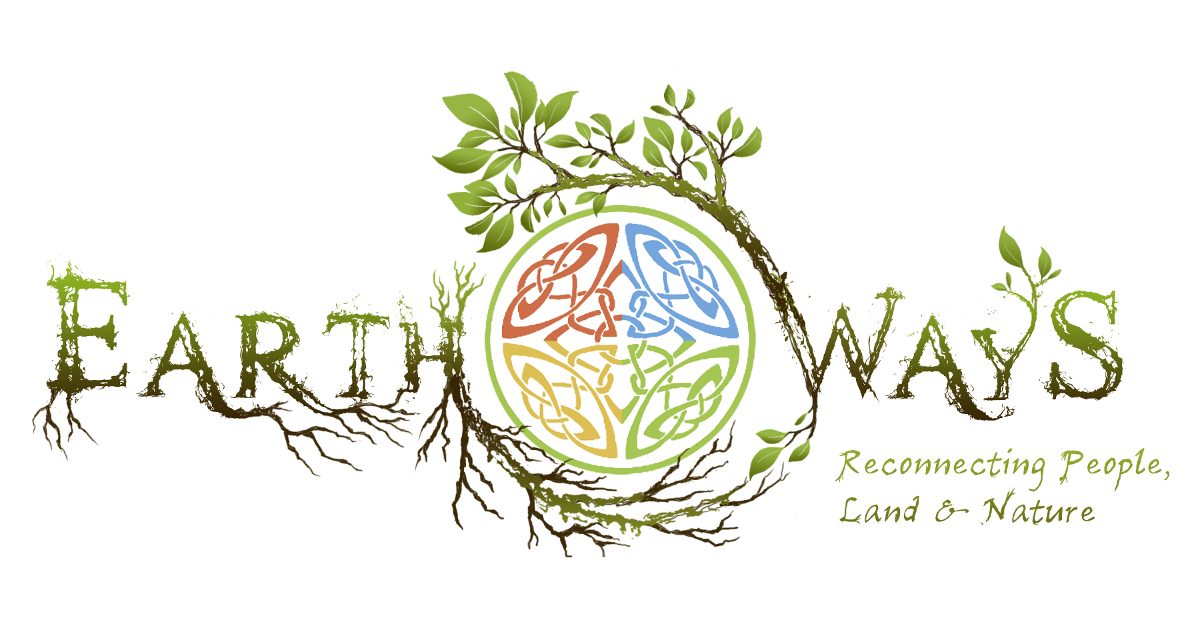Ludwig Appeltans has included a circular economy into the design for the nature-based permaculture community he created on the Isle of Skye. If you want to hire him or learn from him, please feel free to join the Virtual Village.
 Permaculture is a forward-thinking design system based on principles found in nature. Its purpose is to create living environments that are harmonious, sustainable and productive; while greatly reducing the work and energy required to maintain them.
Permaculture is a forward-thinking design system based on principles found in nature. Its purpose is to create living environments that are harmonious, sustainable and productive; while greatly reducing the work and energy required to maintain them.
At its core are the ethical principles of earth care, people care and fair shares.
Permaculture is a word created by Australian ecologists Bill Mollison and David Holmgren in the 1970s. It is a portmanteau of: “permanent” and “agriculture” or “culture”. It covers the holistic issue of making our culture permanently possible and regenerative; starting and focusing on, but not limited to, food production.
Even though the word permaculture was coined recently, the principle is very old. Indigenous cultures around the world practised it. The Aborigines culture is more than 40,000 years old. Surely that is a good example of permanent culture. A Native North American confederacy of tribes called the Haudenosaunee had a Great Law which states it appropriate to think seven generations ahead: the seven-generation sustainability law. It is an ecological concept that urges the current generation of the Haudenosaunee to live sustainably and work for the benefit of future generations and decide whether the decisions they make today would benefit their children seven generations into the future. In my opinion, a brilliant example of permaculture in practice.
The first recorded modern practice of permaculture as a systematic method was by Japanese farmer and philosopher Masanobu Fukuoka since 1937, and Austrian farmer Sepp Holzer in the 1960s, but the method was scientifically developed by Australians Bill Mollison and David Holmgren and their associates during the 1970s.
There is a direct correlation between diversity and resilience. The more different species of organisms (and strong connections between them), in a woodland, the more resilient it is. This is also true for permaculture. Permaculture teachers all over the world are making up their own definition of permaculture. All are pointing to wards the same thing but take a different approach or lay different accents (or connotations). At first glance we might think that this means permaculture is full of divisions. But in reality it strengthens the permaculture movement. As times change and we need to adapt to these changes, new definitions will emerge and permaculture will be stronger than ever.
These are some of the definitions that I like most:
- Permaculture: The development of agricultural ecosystems intended to be sustainable and self-sufficient.
- Permaculture is an approach to designing human settlements and agricultural systems that are modelled on the relationships found in natural ecologies.
- Permaculture is revolution disguised as gardening.
- Permaculture is a sustainable land use design.
- Permaculture is based on ecological and biological principles, often using patterns that occur in nature to maximise effect while minimizing wasted energy.
- Permaculture aims to create stable, productive systems that provide for human needs, harmoniously integrating the land with its inhabitants. The ecological processes of plants, animals, their nutrient cycles, climatic factors and weather cycles are all part of the picture. Inhabitants’ needs are provided for using proven technologies for food, energy, shelter and infrastructure. Elements in a system are viewed in relationship to other elements, where the outputs of one element become the inputs of another.
- Within a Permaculture system, work is minimised, “wastes” become resources, productivity and yields increase, and environments are restored.
- Permaculture principles can be applied to any environment, at any scale from dense urban settlements to individual homes, from farms to entire regions.
- Permaculture combines three key aspects:
-
- an ethical framework
- understandings of how nature works
- a design approach
This unique combination is then used to support the creation of sustainable, agriculturally productive, non-polluting and healthy settlements.
- The word ‘permaculture‘ comes from ‘permanent agriculture‘ and ‘permanent culture‘ – it is about living lightly on the planet, and making sure that we can sustain human activities for many generations to come, in harmony with nature.
- Permaculture is about stability, about deepening soils and cleaner water, thriving communities in self-reliant regions, biodiverse agriculture and social justice, peace and abundance.
- The aim of permaculture is to create systems that are ecologically-sound and economically viable, which provide for their own needs, do not exploit or pollute, and are therefore sustainable in the long term.
- Permaculture uses the inherent qualities of plants and animals combined with the natural characteristics of landscapes and structures to produce a life-supporting system for city and country, using the smallest practical area.”
Do you want to know even more?
Ludwig Appeltans has included a circular economy into the design for the nature-based permaculture community he created on the Isle of Skye. If you want to hire him or learn from him, please feel free to join the Virtual Village.
